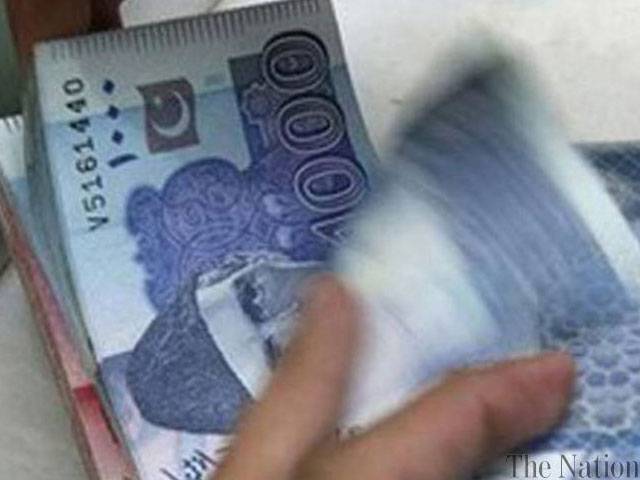ISLAMABAD - The allocation and expenditure for education have been consistently rising over the past few years but still 11 to 15 per cent increase is essential in allocations every year to get every child in school.
An analysis of previous federal and provincial education budgets launched Thursday revealed some encouraging facts but despite improvements in the allocations and expenditures there is a need for improved utilisation of the allocated funds. Institute of Social and Policy Sciences (I-SAPS) has been reporting and comparing the public expenditure of the provincial and federal governments since 2007-08. The current study is a sequel to these reports covering the years 2010-11 to 2013-14.I-SAPS) in collaboration with Alif Ailaan and Department for International Development (DFID) UK organised the launch of report and discussion on "Public Financing of Education in Pakistan (2010-11 to 2013-14)".
It notes that budgetary allocations are generally not leveraged against the major challenges like access and quality of education, showing a sharp disconnect between the two.
The study says that the allocations and expenditures for education have been consistently rising over the past few years.
In 2013-14, the highest allocation for education is in Khyber Pakhtunkhwa which has earmarked 29 per cent of its total budget on education whereas the lowest proportion has been for Balochistan which allocated 18 per cent of its total budget on education sector. Punjab has apportioned 26 per cent of its total budget for education while Sindh has allocated 23 per cent of its budget for education.
In comparison with 2011-12, the actual expenditure on education went up in all the provinces in 2012-13. The highest increase was recorded for Khyber Pakhtunkhwa (25 per cent), followed by Balochistan (17pc), Federal (14.3 per cent), and the Punjab government (14.2 per cent) and there was substantial increase in Sindh too.
It says that salary and allowances account for bulk of education expenditure and absorb the largest proportion of annual increase in expenditure. Whereas non-salary expenditure is relatively a tiny proportion of the total education expenditure in all the provinces, compared with the allocation for salary budget. The report also highlights under-utilisation of development budget and extremely slow implementation of development schemes.
Some districts are disproportionately disadvantaged in terms of their share in education expenditure, it adds.
But despite considerable increase in allocations and spending nearly half of the area of Balochistan remain inaccessible and only 12000 schools catering to the needs of the biggest province in terms of area, said Sardar Raza Muhammad Bareech, Balochistan Education Minister. 'To ensure the implementation of article 25-A, we will have to build more schools for the rest of the population who is still inaccessible'.
Merely increase in allocation and spending is not enough to gauge the improvements and standards and the issue of transparency needs to be resolved first for better results, said Qamarul Islam, Punjab Provincial Assembly Member and Chairman Standing Committee on Education. It must be ensured that the amount is spent on actual schools and not on the ghost ones, he stressed.
Federal Minister for Planning, Development & Reform Prof Ahsan Iqbal has said that 'Pakistan is ranked at the bottom of the ladder in terms of education spending though it falls among the middle income countries in the world'. He stressed the need to spend maximum resources in education sector decentralisation of education in the provinces from centre to the district level.
Friday, November 22, 2024
Up to 15pc increase is edu budget needed: Report

Caption: Up to 15pc increase is edu budget needed: Report
UN chief says ‘failure not an option’ at Baku climate talks
November 22, 2024
IG Islamabad ‘seeks’ additional contingents
November 22, 2024
5 Islamabad restaurants sealed over issuing fake invoices
November 22, 2024
PTDC announces photographic competition to mark Int’l Mountain Day
November 22, 2024
2 drug suppliers sentenced to 9-year jail term
November 22, 2024
-
Hunger crisis to increase in South Sudan, warns UN
-
Hunger crisis to increase in South Sudan, warns UN
-
Pakistan’s judiciary champions climate justice at COP29 in Baku
-
Punjab struggles with persistent smog as Met Office forecast rainfall
-
Punjab residents face escalating smog crisis as pollution levels soar across country
-
Qatar says Hamas 'no longer welcome' in Gulf state
Land of Vigilantes
November 21, 2024
United in Genocide
November 21, 2024
Finally Fighting Back
November 21, 2024
Digital Stagnation
November 20, 2024
Xi’s Red Lines
November 20, 2024
Independent Supreme Court
November 21, 2024
Fat Loss Fantasy
November 21, 2024
Tackle Corruption Within School Boards
November 20, 2024
To Be Opportunistic
November 20, 2024
Democratic Backsliding
November 20, 2024
ePaper - Nawaiwaqt
Nawaiwaqt Group | Copyright © 2024





